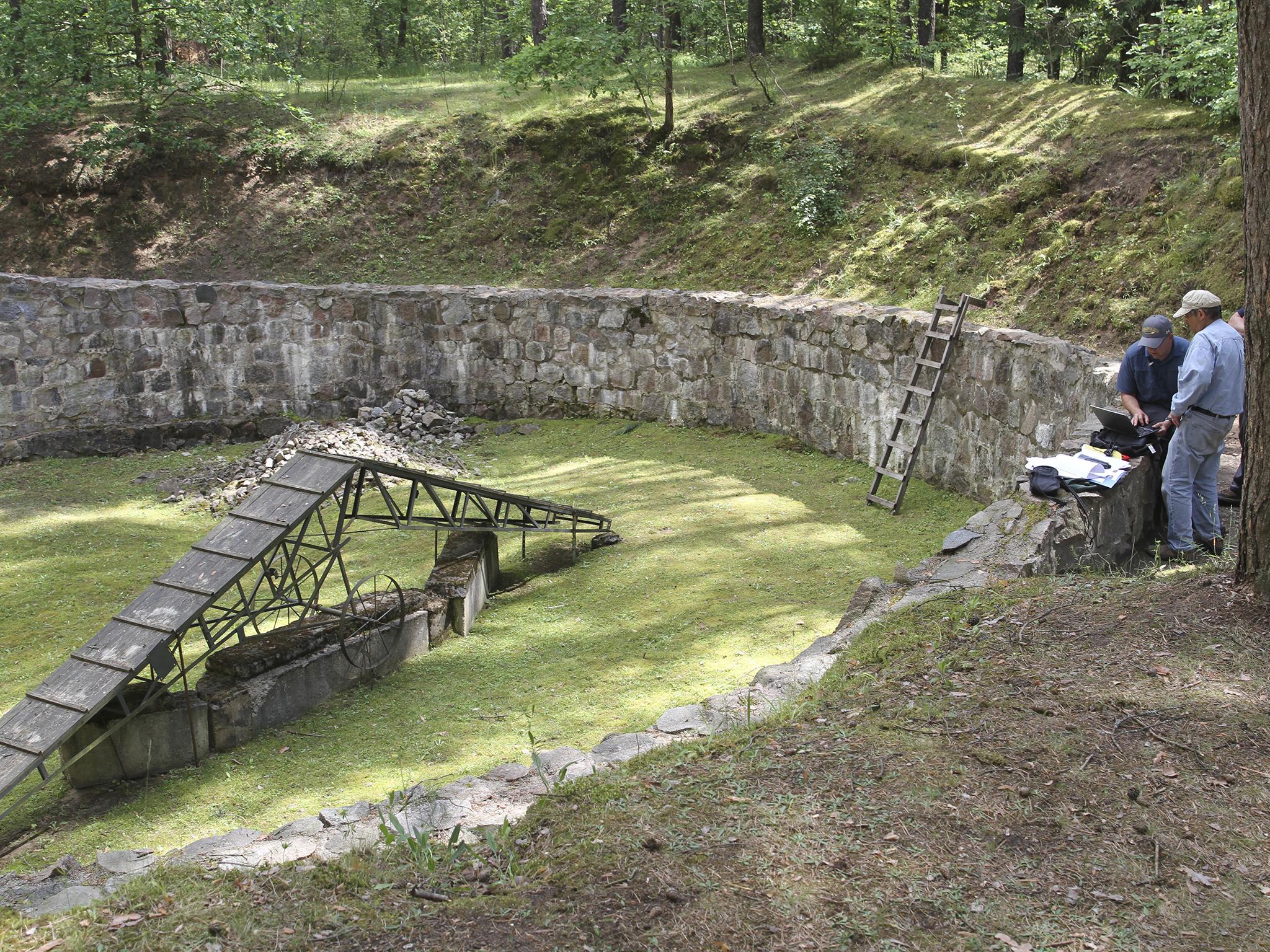Secret tunnel hand-dug by Jews to escape Nazi captors discovered beneath massacre site
Jewish prisoners in Lithuania dug the legendary tunnel with spoons while under occupation during the Second World War

In a Lithuanian forest, an international research team has pinpointed the location of a legendary tunnel that Jewish prisoners secretly dug out with spoons to try to escape their Nazi captors during World War Two, the Israel Antiquities Authority announced Wednesday.
The tunnel, located in the Ponar forest, known today as Paneriai, outside of the Lithuanian capital of Vilnius, is the site where some 100,000 people, including 70,000 Jews, were killed and thrown into pits during Nazi occupation.
In the quest to find the tunnel, the team of archaeologists, geophysicists and Jewish historians from Israel, the United States, Canada and Lithuania did not want to disturb any human remains in the mass burial pits at the site.
So the researchers used scanning technology called electrical resistivity tomography — the same kind used in mineral and oil exploration — to map out the path of the 34-metre (112-foot) -long tunnel.
"To find a little glimmer of hope within the dark hole of Ponar is very important as humans," said Jon Seligman, an archaeologist with Israel's antiquities authority, who participated in the expedition.
"The tunnel shows that even when the time was so black, there was yearning for life within that," he added.
Towards the end of the war, the Nazis sought to erase the evidence of their mass killings. Jewish and Soviet prisoners were brought to the Ponar forest from Stutthof concentration camp. With their legs chained, they were forced to dig up the mass graves, collect bodies and burn them.
The prisoners were dubbed the Burning Brigade and they lived in fear that once their task was complete, they too would be killed.
According to accounts, one prisoner, Isaac Dogim, was piling decomposed corpses when he recognized members of his own family, including his wife. He identified her by the medallion he had given her for their wedding.
He is credited with organising the escape.
At night, the prisoners were held in one of the pits used in the killings. For three months, some of the prisoners secretly dug an underground tunnel to escape.
World War Two Photo Essay: The Final Weeks
Show all 20Then on April 15, 1944, in the middle of the night, 40 prisoners filed off their chains and fled through the narrow tunnel. Guards quickly discovered them and many were shot, but 11 prisoners managed to escape to the forest, reach partisan forces and survive the war.
"It is a very important discovery, because this is another proof of resistance of those who were about to die," said Markas Zingeris, director of the Vilna Gaon Jewish State Museum in Vilnius.
A Lithuanian archaeologist discovered the tunnel entrance in 2004, and the museum called on the research team to search for the entire tunnel. The team traced the length of the tunnel and found the tunnel exit. Their quest is the subject of a forthcoming documentary by the science series NOVA, premiering in the US next year.
Last year, the same research team used ground penetrating radar to discover parts of the old Great Synagogue of Vilna, which was demolished by Soviet authorities after the war. The team is now excavating at the site to uncover the history of Jewish life in Vilnius.
"There were 500 years of creativity, a vibrant community," said Seligman, the archaeologist, referring to Jewish history in Lithuania. "We can't just look at the Holocaust."
AP
Subscribe to Independent Premium to bookmark this article
Want to bookmark your favourite articles and stories to read or reference later? Start your Independent Premium subscription today.
